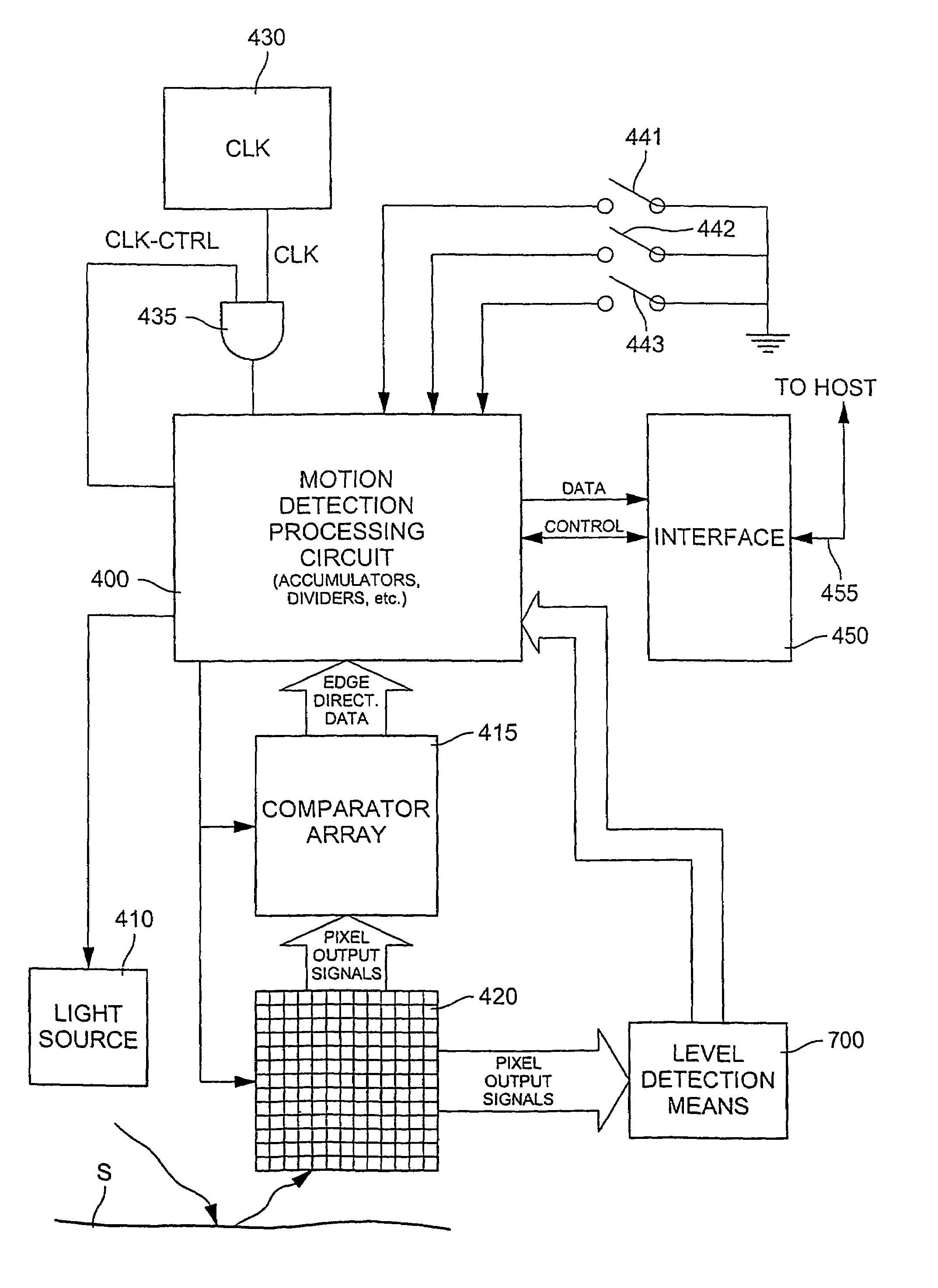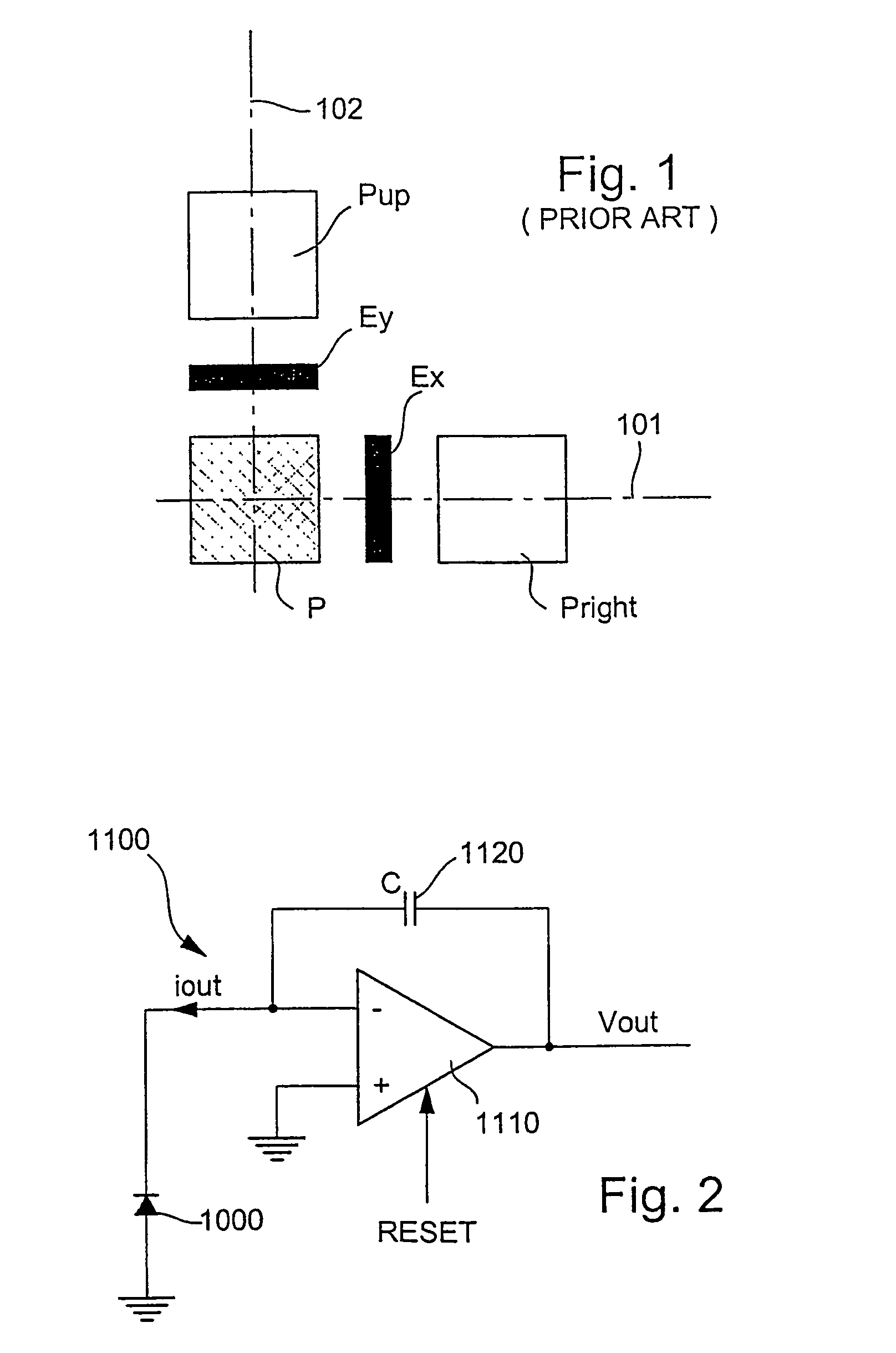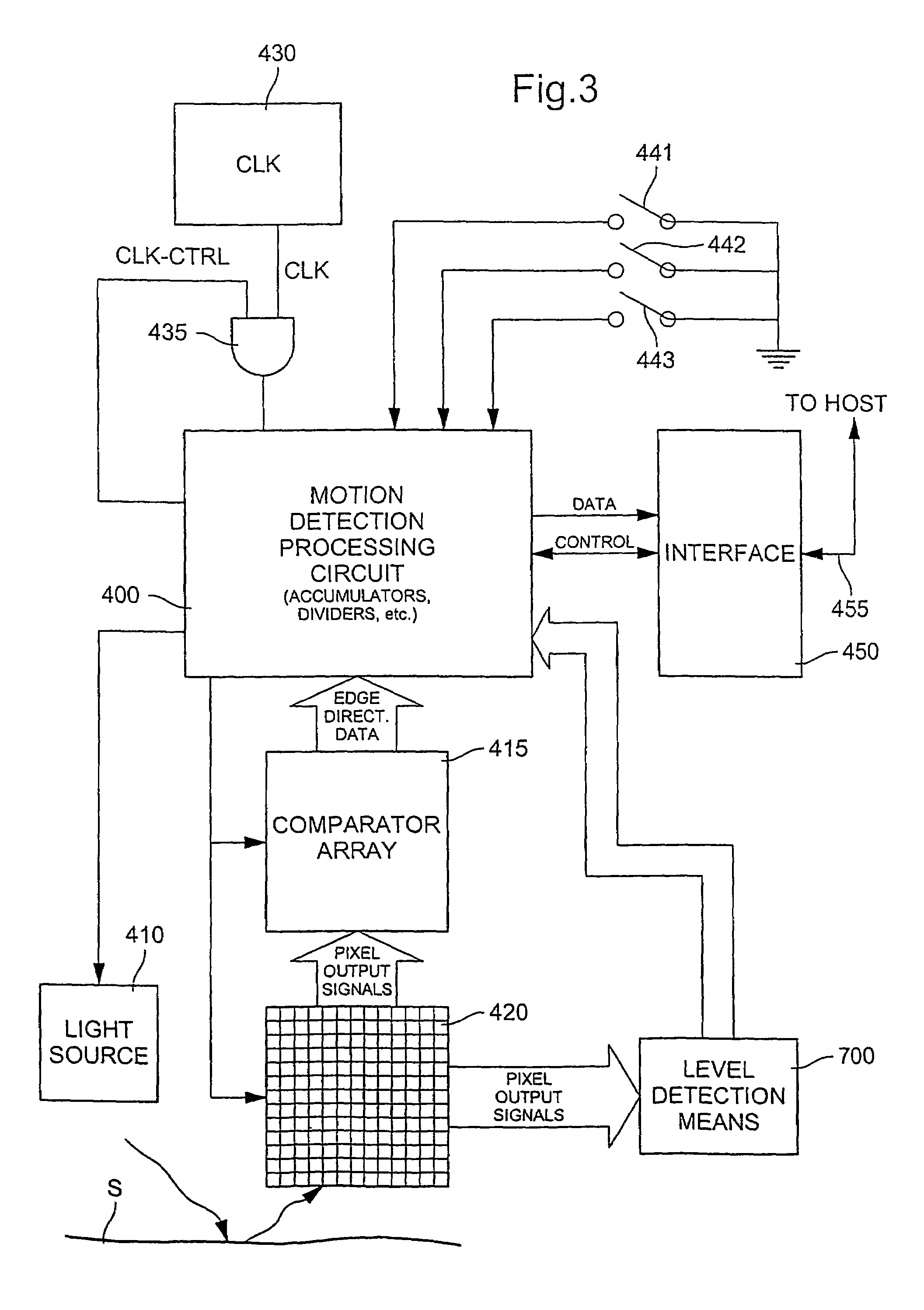Method and sensing device for motion detection in an optical pointing device, such as an optical mouse
a motion detection and optical mouse technology, applied in the field of pointing devices, can solve the problems of inapplicability of the above-mentioned motion detection technique, inability to derive any measurement of the relative motion between the optical sensing device and the illuminated surface, and inability to compare the light intensity between neighbouring pixels to provide any information, etc., to achieve the effect of increasing the complexity of processing, increasing the contrast of surface patterns, and great sensitiveness
- Summary
- Abstract
- Description
- Claims
- Application Information
AI Technical Summary
Benefits of technology
Problems solved by technology
Method used
Image
Examples
Embodiment Construction
[0057]Two algorithms will be described in the following description. The first algorithm will be referred to as “Peak / Null Motion Detection” algorithm and the second as “Local Edge Direction Motion Detection” algorithm. Both algorithms use only edge direction data from the pixel array.
[0058]FIG. 3 is a generalized schematic bloc diagram of an optical pointing device in accordance with the present invention. It comprises a photodetector array 420 including a plurality of pixels, this photodetector array 420 being coupled to processing means 400 (or motion detection processing circuit) which consists, in a non limiting manner, of a micro-controller, microprocessor or other adequate logic circuitry for processing the signals outputted by the photodetector array 420. Motion detection processing circuit 400 in particular includes accumulator circuits and other logic circuits for performing mathematical and logic operations as this will be understood hereinafter.
[0059]As schematically ill...
PUM
 Login to View More
Login to View More Abstract
Description
Claims
Application Information
 Login to View More
Login to View More - R&D
- Intellectual Property
- Life Sciences
- Materials
- Tech Scout
- Unparalleled Data Quality
- Higher Quality Content
- 60% Fewer Hallucinations
Browse by: Latest US Patents, China's latest patents, Technical Efficacy Thesaurus, Application Domain, Technology Topic, Popular Technical Reports.
© 2025 PatSnap. All rights reserved.Legal|Privacy policy|Modern Slavery Act Transparency Statement|Sitemap|About US| Contact US: help@patsnap.com



